Lygia Clark – Organic Planes @ Henry Moore Institute
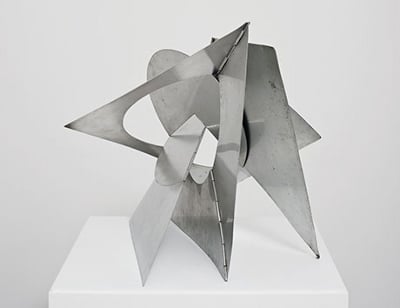
Gallery 4 at the Henry Moore Institute is currently the only space open to the public while the remaining gallery spaces are being refurbished. As you enter the bijoux gallery 4 it feels like you have entered an artist’s studio where the artist- Brazilian Lygia Clark- has just popped out, leaving her studio assistant (the invigilator) seated in the corner. Inside the ‘studio’ we find her Organic Planes project which can be seen in all its glory, described as “a set of actions, articulations and interventions that increasingly involved the body”. This is part of the Bichos series, an affectionate Portuguese word meaning ‘bugs’ or ‘creepy crawlies’.
There are a series of accompanying works alongside the main sculpture including cardboard collages and maquettes in aluminium and balsa wood which give us an insight into Lygia Clark’s thought process as well as her working processes. The collages show the start of the Plane project in two dimensions and take it through to three dimensions in the small maquettes and the centrally placed final sculpture. We have a real sense of the way Lygia Clark worked as an artist. Her processes involved working and reworking the materials, endlessly folding and unfolding paper, cardboard and metal.
The main sculpture is the star of the show, a substanitial and impressive metal piece entitled ‘Bicho pássaro do espaço’ which is translated as ‘creature passing through space’ but as a Portuguese speaker I know that ‘pássaro’ is the Portuguese for bird and has little to do with passing. So it actually translates as ‘bird bug in space’, which makes more sense when you look at the sculpture that appears to have wings as the metal planes are hinged. The hinges in between the planes act as a backbone on the bug or bicho, giving lots of movement to the structure, just like bugs have. The hinges were originally there to be manipulated. Her pieces are made with the intention of being touched and interacted with. She never intended the sculptures to be static pieces that were ‘finished objects’. She intended the relationship between the artist and the viewer to be an ongoing one. As viewers she intended us to explore the possibilities of her works by manipulating them, literally handling the works.
‘[Clark’s] pieces are made with the intention of being touched and interacted with…’
The touch and texture of her work is of great importance to her, as is the relationship that she and her work create with the audience. The pieces are created not just to be perceived from an aesthetic viewpoint but to be actively interacted with. However that is no longer possible. So rather than being interacted with physically, as we are unable to touch the work, we have to use our imagination. The sculpture itself is somewhat tantalising and if the invigilator had not been present I do not trust that I could have kept my hands off the work, which is a true testament to Lygia Clark’s intentions as an artist.
Lygia Clark’s ‘Organic Planes’ is at the Henry Moore Institute until 4th January 2015. For more information and christmas opening hours visit the website – henry-moore.org
Madeleine Walton
Nostalgia & Progress: Illustration after the Second World War

Image: Edward Ardizonne, Windy Day, Pen, Ink and Watercolour on Paper, 1947
Stanley & Audrey Burton Gallery, Leeds University
In Leeds University’s iconic Parkinson Building is the Stanley & Audrey Burton Gallery which is currently showing Nostalgia & Progress: Illustration After the Second World War. This is their third exhibition in a series exploring the history of British book illustration. The exhibition showcases the work of major post-war British illustrators such as Edward Bawden and Edward Ardizzone alongside contemporary illustrators inspired by the period after the war when new printing presses were created and with them new opportunities for artists to work as illustrators.
In our media obsessed 21st century we are overwhelmed with information and images. The exhibition celebrating the handmade nature of images from the era after the Second World War gives us a welcome release from our overloaded digital image age.
The current austerity era we find ourselves in, echoes the post-war era where rationing was still in place. Now we find comfort in the nostalgia of the past as can be seen in the success of the vintage revival we are currently experiencing from Cath Kidston to Kirsty Allsopp and ‘make-do-and-mend’. That same nostalgia can be found in abundance in this exhibition.
The coats and hats in the illustrations of Edward Ardizonne adorn the racks of the many vintage shops occupying our high streets today. These illustrations give us an insight into the lives of the post-war. The well-wrapped up children walking (there were no school runs in those days) to their local school in their uniform hats, caps and coats.
In this exhibition we find a real sense of a world where people were anxious to create a safe environment after the horrors of the Second World War and those ambitions live on in the illustrations of the contemporary artists shown alongside the illustrations by the post war artists. The influence of the post-war illustrators can be seen clearly in the work of these contemporary illustrators.
Emily Sutton, The Incredible Journey, Book jacket commission, Ink and Watercolour on Paper, 2013.
Emily Sutton’s illustration for the cover of the 2013 edition of Incredible Journey would not look out of place on the bookcase of any 1950s home.
Alongside the illustrations are associated ephemera from the post-war years including a dazzling pink patterned menu card for Dinner on Christmas Eve at the Queens Hotel Restaurant in Leeds designed by Edward Bawden. It is enchanting and so is the menu in French of Consommé Yvette, Carré d’Agneau Basquetière and finishing off with Pêche Glace Cardinal. Also delightful are the 1953 book covers Folio Society, the brainchild of Charles Ede who was an early printing pioneer. The Folio Society commissioned some of the best illustrators of its time and continues to do so.
Included in the exhibition is work by Ronald Searle whose vibrant children’s designs masked his own war experiences including the three years he spent as a Japanese Prisoner of War. Contemporary artists include the Leeds-based artist Matthew the Horse who does a drawing a day emulating Ardizzone’s drive to draw.
The contemporary artists are clearly influenced by the post-war illustrators whose work is exhibited. In some cases it is the actual design while for others it is the atmosphere of the era and a nostalgia for a much simpler age one that we all hanker after.
Madeleine Walton
Nostalgia & Progress: Illustration after the Second World War runs at the Stanley & Audrey Burton Gallery until February 28th 2015.
25 Years of The Terrace Gallery

[Image: Antony Gormley and ‘Two States’ at The Terrace Gallery. Courtesy of Harewood House]
The Terrace Gallery at Harewood House is 25 years old this year. Founded by the current Countess of Harewood, it is a dynamic space that deserves to be much better known. Diane Howse (the Countess) is an artist who, more recently, was also one of the founders of Project Space Leedswhere she worked for a number of years. She is an established contemporary artist and this is evident in the Terrace Gallery.
The Terrace Gallery. Work by Sidney Nolan
When Diane arrived at Harewood in 1986 it was before the programme of restoration that saw many of the rooms refurbished and the whole of the roof repaired. In the Sub Hall, later to become the Terrace Gallery, there was an exhibition of Long Case clocks. Soon after, the Gallery was refurbished by Johnny Lister, the Clerk of Works and his team. A new programme of art was set up that would not patronise the audience and that emphasised engagement with the work. The actual space is boarded out creating a white cube, the epitome of a contemporary artspace and a sculptural intervention in itself, located Below Stairs at Harewood House.
Harewood has had a long history with contemporary art: 250 years ago the then YBA JMW Turner, aged 22, painted at Harewood and his paintings still adorn the walls there. Other well-known artists historically associated with the House include watercolourists Thomas Girtin, John Varley and John Piper, and photographer Roger Fenton.
‘Desert Dreamings’ at The Terrace Gallery. Courtesy of Harewood House
The list of artists who have exhibited at the Terrace Gallery over the last 25 years reads like a top 100 contemporary artists list including Sonia Boyce, Kate Davis, Clare Woods, Barbara Rae, Sharon Kivland, Terry Frost, David Hockney, Mark Wallinger, Bill Viola, Andy Golsworthy and Antony Gormley. The latter was here in 2011 with an exhibition entitled Two States, which followed an exhibition earlier that year tracing the journey of Jacob Epstein’s magnificent carved alabaster figure Adamthat sits proudly in the entrance hall at Harewood. Many of the artists who have exhibited at Harewood have gone on to be nominated for the Turner Prize including Zarina Bhimji whose focus was gardens and Empire comparing the Alhambra Palace Gardens in Granada, Spain and the Harewood Gardens.
Mark Wallinger at The Terrace Gallery. Courtesy of Harewood House
Work by Bill Viola at The Terrace Gallery. Courtesy of Harewood House
Antony Gormley’s ‘Two States’ at The Terrace Gallery. Courtesy of Harewood House
The Terrace Gallery is situated within the main house at Harewood. Artists often respond to the space in new and innovative ways. Others take their work out of the Gallery and into the house itself. In 2007 M.F.Hussein’s paintings adorned Lord Harewood’s sitting room. Artwork has also expanded into the garden to mingle with the statues and ornamental gardens. Leo Fitzmaurice winner of the Northern Artprize 2011 has three bespoke pieces What Use is a Sign if we Know The Way? in the West Garden which are permanent features of the gardens at Harewood. The spectacular landscape of the Harewood estate lends itself to land art: Diane herself, together with Thomas A. Clark and Andrew Halley, produced Spiral Meadow in 1999 in the walled garden reanimating a part of the garden that at the time was disused and closed to the public. In 2001 artist Kate Whiteford created what appeared to be a large chalk drawing in the shape of a 18th century Chippendale sofa, on the hillside to the south of the House, which was in fact made of cut-out canvas so as not to disturb the historic landscape. In 2010 Kate Davis wrapped a tree, on the other side of the lake, in gold material. This work has been retained and is renewed each year.
Some artists have also used the All Saints Church at Harewood. Clare Woods’ large scale prints shown in her 2013 exhibition The Seven Eggs in the Terrace Gallery referenced the alabaster tomb carvings and Anya Gallaccio transformed the Church itself with her piece using bright red gerbera flowers that were pressed between glass, beautiful at the beginning but more challenging as they rotted over time.
Sir Terry Frost at The Terrace Gallery. Courtesy of Harewood House
The Terrace Gallery is one of Yorkshire’s hidden gems that punches well above its weight and deserves to be part of the Yorkshire Sculpture Triangle: Henry Moore Institute/Leeds Art Gallery;Yorkshire Sculpture Park and The Hepworth Wakefield; these spaces, like The Terrace Gallery, show a variety of art mediums including sculpture. I propose a fourth corner to the triangle of three by adding The Terrace Gallery at Harewood and thereby creating the Yorkshire Art Parallelogram!
Currently showing at the Terrace Gallery is Henry Moore in the Arts Council Collection until 2nd November when Harewood will shut for the winter season. In 1986 Moore discussed with the then Earl, the possibility of having one of his sculptures in the grounds of Harewood. He died shortly afterwards and so this plan was never realised. It is therefore somewhat poignant to finally see one of Moore’s sculptures outside Harewood. It was from here the Tour De France departed this summer. In the New Year Harewood is set to exhibit the work of Gaudier-Brzeska in The Terrace Gallery.
Madeleine Walton
Harewood House and The Terrace Gallery is open until November 2nd 2014 and will reopen in April 2015.
For more information on the house and The Terrace Gallery, visit www.harewood.org or contact the house using the details below.
Address:
Harewood House
Harewood
Leeds
LS17 9LG
Email: info@harewood.org
Tel: 0113 218 1010

[Image: Antony Gormley and ‘Two States’ at The Terrace Gallery. Courtesy of Harewood House]
The Terrace Gallery at Harewood House is 25 years old this year. Founded by the current Countess of Harewood, it is a dynamic space that deserves to be much better known. Diane Howse (the Countess) is an artist who, more recently, was also one of the founders of Project Space Leedswhere she worked for a number of years. She is an established contemporary artist and this is evident in the Terrace Gallery.
The Terrace Gallery. Work by Sidney Nolan
When Diane arrived at Harewood in 1986 it was before the programme of restoration that saw many of the rooms refurbished and the whole of the roof repaired. In the Sub Hall, later to become the Terrace Gallery, there was an exhibition of Long Case clocks. Soon after, the Gallery was refurbished by Johnny Lister, the Clerk of Works and his team. A new programme of art was set up that would not patronise the audience and that emphasised engagement with the work. The actual space is boarded out creating a white cube, the epitome of a contemporary artspace and a sculptural intervention in itself, located Below Stairs at Harewood House.
Harewood has had a long history with contemporary art: 250 years ago the then YBA JMW Turner, aged 22, painted at Harewood and his paintings still adorn the walls there. Other well-known artists historically associated with the House include watercolourists Thomas Girtin, John Varley and John Piper, and photographer Roger Fenton.
‘Desert Dreamings’ at The Terrace Gallery. Courtesy of Harewood House
The list of artists who have exhibited at the Terrace Gallery over the last 25 years reads like a top 100 contemporary artists list including Sonia Boyce, Kate Davis, Clare Woods, Barbara Rae, Sharon Kivland, Terry Frost, David Hockney, Mark Wallinger, Bill Viola, Andy Golsworthy and Antony Gormley. The latter was here in 2011 with an exhibition entitled Two States, which followed an exhibition earlier that year tracing the journey of Jacob Epstein’s magnificent carved alabaster figure Adamthat sits proudly in the entrance hall at Harewood. Many of the artists who have exhibited at Harewood have gone on to be nominated for the Turner Prize including Zarina Bhimji whose focus was gardens and Empire comparing the Alhambra Palace Gardens in Granada, Spain and the Harewood Gardens.
Mark Wallinger at The Terrace Gallery. Courtesy of Harewood House
Work by Bill Viola at The Terrace Gallery. Courtesy of Harewood House
Antony Gormley’s ‘Two States’ at The Terrace Gallery. Courtesy of Harewood House
The Terrace Gallery is situated within the main house at Harewood. Artists often respond to the space in new and innovative ways. Others take their work out of the Gallery and into the house itself. In 2007 M.F.Hussein’s paintings adorned Lord Harewood’s sitting room. Artwork has also expanded into the garden to mingle with the statues and ornamental gardens. Leo Fitzmaurice winner of the Northern Artprize 2011 has three bespoke pieces What Use is a Sign if we Know The Way? in the West Garden which are permanent features of the gardens at Harewood. The spectacular landscape of the Harewood estate lends itself to land art: Diane herself, together with Thomas A. Clark and Andrew Halley, produced Spiral Meadow in 1999 in the walled garden reanimating a part of the garden that at the time was disused and closed to the public. In 2001 artist Kate Whiteford created what appeared to be a large chalk drawing in the shape of a 18th century Chippendale sofa, on the hillside to the south of the House, which was in fact made of cut-out canvas so as not to disturb the historic landscape. In 2010 Kate Davis wrapped a tree, on the other side of the lake, in gold material. This work has been retained and is renewed each year.
Some artists have also used the All Saints Church at Harewood. Clare Woods’ large scale prints shown in her 2013 exhibition The Seven Eggs in the Terrace Gallery referenced the alabaster tomb carvings and Anya Gallaccio transformed the Church itself with her piece using bright red gerbera flowers that were pressed between glass, beautiful at the beginning but more challenging as they rotted over time.
Sir Terry Frost at The Terrace Gallery. Courtesy of Harewood House
The Terrace Gallery is one of Yorkshire’s hidden gems that punches well above its weight and deserves to be part of the Yorkshire Sculpture Triangle: Henry Moore Institute/Leeds Art Gallery;Yorkshire Sculpture Park and The Hepworth Wakefield; these spaces, like The Terrace Gallery, show a variety of art mediums including sculpture. I propose a fourth corner to the triangle of three by adding The Terrace Gallery at Harewood and thereby creating the Yorkshire Art Parallelogram!
Currently showing at the Terrace Gallery is Henry Moore in the Arts Council Collection until 2nd November when Harewood will shut for the winter season. In 1986 Moore discussed with the then Earl, the possibility of having one of his sculptures in the grounds of Harewood. He died shortly afterwards and so this plan was never realised. It is therefore somewhat poignant to finally see one of Moore’s sculptures outside Harewood. It was from here the Tour De France departed this summer. In the New Year Harewood is set to exhibit the work of Gaudier-Brzeska in The Terrace Gallery.
Madeleine Walton
Harewood House and The Terrace Gallery is open until November 2nd 2014 and will reopen in April 2015.
For more information on the house and The Terrace Gallery, visit www.harewood.org or contact the house using the details below.
Address:
Harewood House
Harewood
Leeds
LS17 9LG
Harewood House
Harewood
Leeds
LS17 9LG
Email: info@harewood.org
Tel: 0113 218 1010
October 2014
I have just come back from London where I saw some amazing exhibitions.Jenny Saville at the Gagosian Gallery
I started off at the Gacosian Gallery on Britannia St not far from St Pancras. There I saw Jenni Saville's OXYRHYNCHUS first ever solo exhibition. The huge canvases were mesmerising. The painting that most enthralled me was Dusk which used pastel and charcoal in the most amazing way.
Untitled 2014

Dusk
Secundino Hernandez at Victoria Miro Wharf Road
Further on towards Old Street is the Victoria Miro Gallery (next door to another great gallery Parasol Unit - both galleries share a stunning garden) where Secundino Hernandez exhibited huge paintings full of explosions and dramatic gestures. I just wish they weren't all entitled Untitled.
Untitled
Richard Long & Ai Weiwei at The Lisson Gallery Bell St
Richard Long's text works and photographs documenting his walks are interesting enough.
With No Direction Known Like A Rolling Stone, 2013
A Line for a Time at a Place, 2012
However I have a problem when he takes stones from their natural habitat to bring them into the gallery
Four Ways
Delabole Slate from Cornwall
Ai Weiwei's work was absorbing and impressive. The numerous sculptures included a marble cast of his father's armchair confusingly described as a couch.
Marble Couch
Also glass casts of the taxis window cranks that were removed so that people were not able to distribute leaflets in or around Tiananmen Square.
Taxi Window Cranks
The film explaining the ban of taxis to Tiananmen Square was riveting.
Discard the old path of closed doors and rigidity and reject evil attempts to change the Party’s banner, 2012
Leo Fitzmaurice at The Sunday Painter Peckham
I have been a fan of Leo Fitzmaurice for some time. His work is always thought provoking and inspiring. At the Sunday Painter he has covered each corner and line of the gallery with brown gummed paper tape. In addition there are framed works. One looks like a duster but is actually saffron coloured paper with red pen.
Duster Drawing (2012), biro on paper
Another looks like a j-cloth but it isn't.

J Cloth Drawing, permanent marker pen on folded tracing paper, 2013
Matisse Cut-Outs at Tate Modern
This was a seriously busy exhibition but worth the crowds to see so many of his original iconic works.White Cube Bermondsey
Andreas Gursky
His fantastic paintings seemed quite small here but they are really huge and so impressive.
Bahrain I

How did he take a photo of The Antartic, did he use a satellite?
Augustus Thomson
This exhibition was all about symbols and signs.

Cog and Round 2014
Ink and pencil on canvas
Alex Do Corte
This fantasy stuff does nothing for me.
Jack Greer
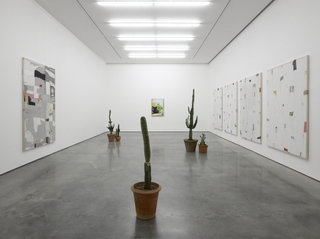
I loved the textile 'paintings'
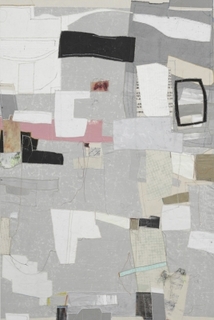
Gabe 2014
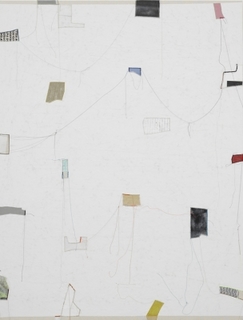
Finding Order 8
but I was a bit worried about the cutting into the cactus. Does it harm the cactus?
Over the Hills (Detail)
2014
Cactus
Curly
Looking Up At the Stars (Detail)
2014Cactus
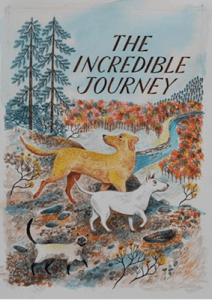
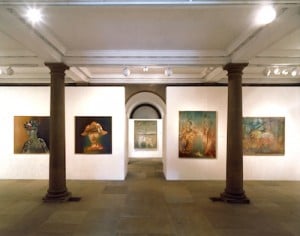


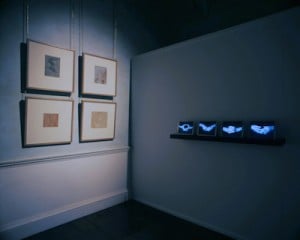
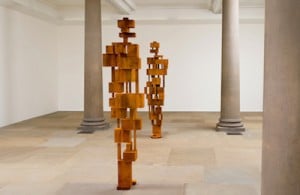


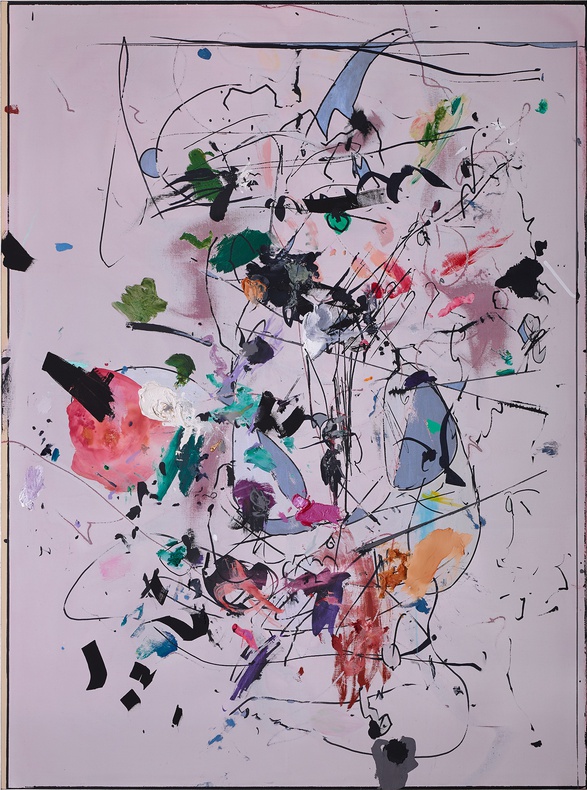



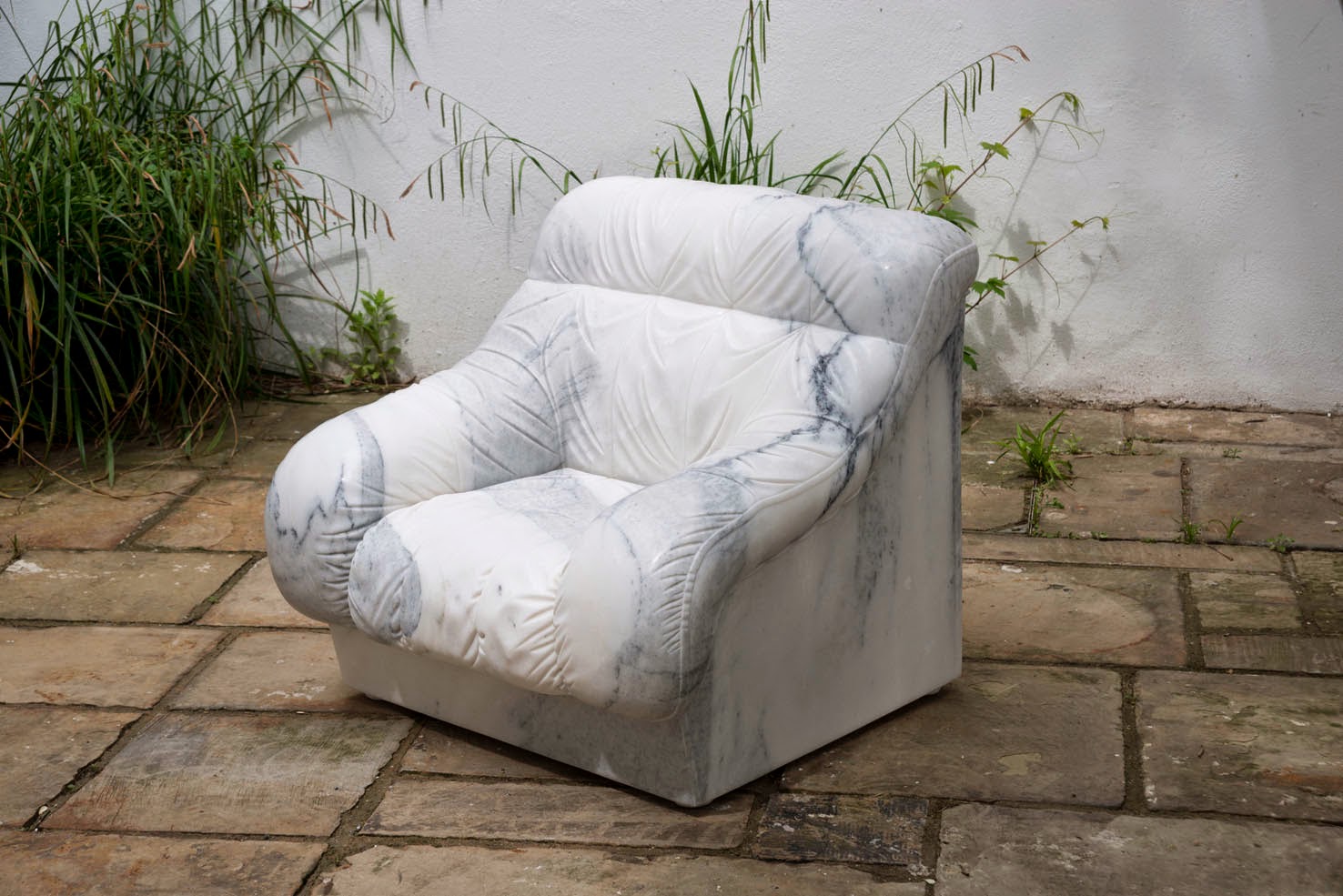












Get the best exhibition stand in Dubai, don’t worry for arrangement as Dubai best contractors are here to place stands which can affect your product sales.
ReplyDeleteExhibition Stand Dubai
We are best known for our high-quality exhibit standout designs. Exhibition Stands Builders Dubai
ReplyDelete